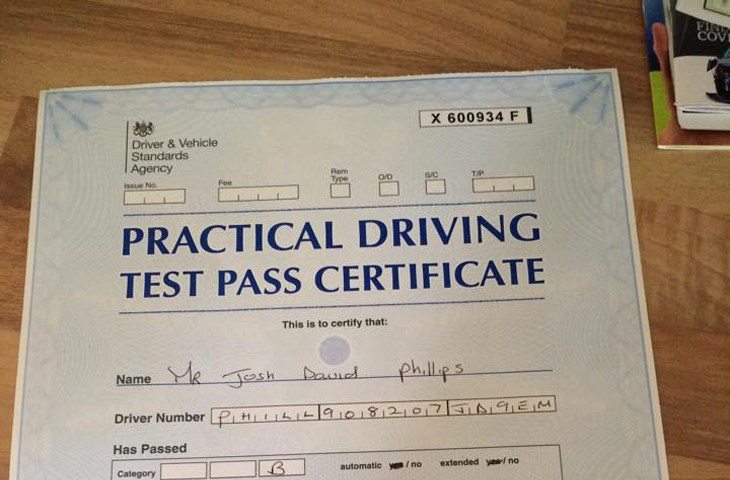
The UK driving test is having changes made to it, the biggest shake-up in over a decade, in moves announced by the Driver and Vehicle Standards Agency (DVSA) as they aim to not only save lives but to also improve road safety.
The changes come into operation from December 4th 2017, and include:
- Learning how to use a Sat Nav
- Being tested on use of other technology
- Driving longer independently
- Driving into a parking bay
Quoted on the Devon Live website, Transport Minister Andrew Jones said: "We have some of the safest roads in the world but we are always looking to make them safer. These changes will help reduce the number of people killed or injured on our roads and equip new drivers with the skills they need to use our roads safely.
"Ensuring the driving test is relevant in the 21st century, for example the introduction of sat navs, will go a long way towards doing this."
 With technology a lot more prevalent in cars than even a few years ago - around 50% of drivers now own a Sat Nav - it makes sense to ensure that safe use of it is tested before drivers are let loose on the UK roads; and by replacing a slow reverse around a corner on a quiet road with the parking in a parking bay, it enables examiners to "better assess the ability of learners to drive safely in busier areas", so the DVSA says.
With technology a lot more prevalent in cars than even a few years ago - around 50% of drivers now own a Sat Nav - it makes sense to ensure that safe use of it is tested before drivers are let loose on the UK roads; and by replacing a slow reverse around a corner on a quiet road with the parking in a parking bay, it enables examiners to "better assess the ability of learners to drive safely in busier areas", so the DVSA says.
So what's actually changing?
- At the moment, learners have to drive independently for 10 minutes. this is being increased to 20 minutes using a Sat Nav OR traffic signs, with the examiner determining which should be used when. At least 20% of the test will definitely use road signs.
- The following list of manoeuvres, one of which will HAVE to be performed, are being replaced: Turn in the road, Reverse around a corner and Reverse parking into a bay or at the side of the road. They are being replaced by: Drive into and reverse out of a parking bay; Pull up on the right, reverse and re-join the traffic; and Reverse parking into a bay or at the side of the road (as before). ONE of these 3 will have to be performed.
- The 'show me' and 'tell me' question that examiners ask at the start of the driving test are being seperated, with the 'tell me' question at the beginning and the 'show me' question on the move.
- The Sat Nav that is used is one supplied by the examiner. Candidates can't use their own Sat Nav during the test.
What's NOT changing?
- The pass mark is staying the same - a candidate is allowed no more than 15 driving faults and no serious or dangerous faults
- The overall time of the driving test will remain at around 40 minutes
- And the cost of the driving test will also stay the same with a theory test costing £23 for cars, and the driving test costing £62
RAC Foundation director Steve Gooding said they these changes will mean learner drivers will "undergo a far more realistic assessment of their readiness to take to the road unsupervised. Much has changed since the first driving test was taken in 1935, and it must be right that the test evolves, just as the cars we drive are themselves changing to incorporate ever more driver assist technology, such as inbuilt Sat Nav systems.
"Novice drivers need to demonstrate the right skills and driving style to cope with the new environment."
Auto Express believe that these changes are just the start as the DVSA attempt to make the driving test more relevant to the real-world. They suggest that learners could be allowed to drive on a motorway accompanied by an approved instructor in a car fitted with dual controls, while the future technologies involved in driving autonomy could also be introduced into the test.
There are also plans for a voluntary electronic logbook for learners to track their progress to make sure that people take the test when they are really ready, and also a voluntary scheme for driving instructors to publish pass rates of pupils, so that learners can base their choice of instructor on statistics rather than word of mouth.
DVSA chief executive Gareth Llewellyn added: "Making sure the driving test better assesses a driver’s ability to drive safely and independently is part of our strategy to help you stay safe on Britain’s roads.
"It’s vital that the driving test keeps up to date with new vehicle technology and the areas where new drivers face the greatest risk once they’ve passed their test."
Originally posted: 5th June 2017

